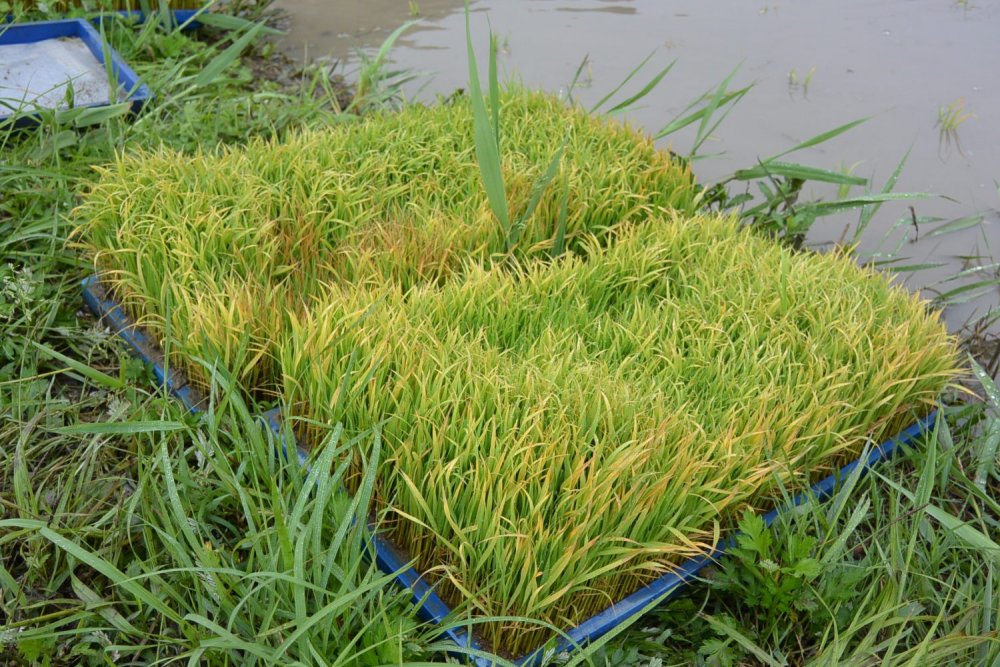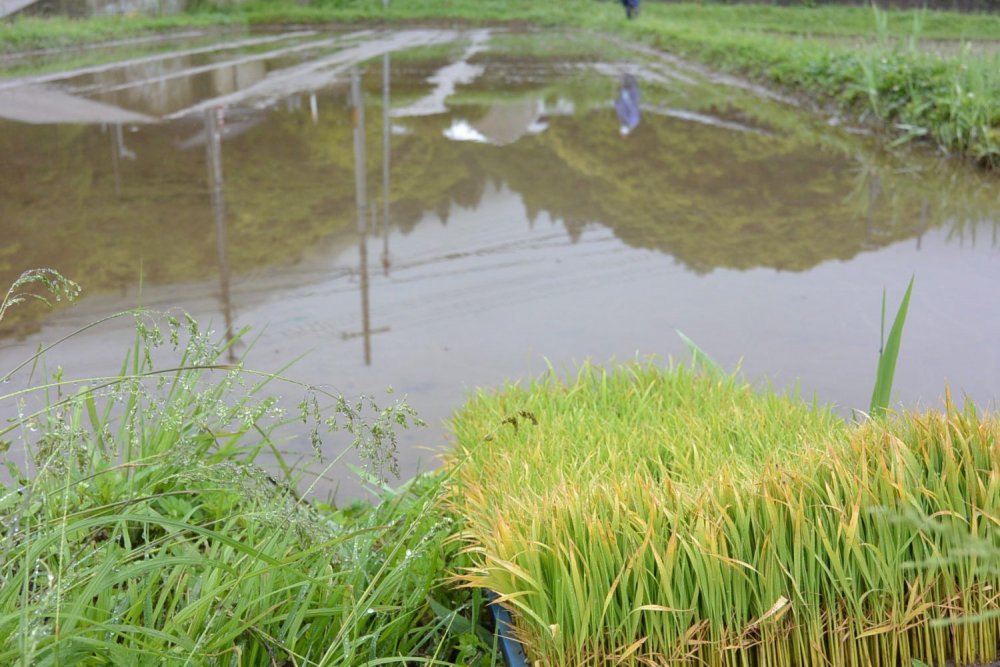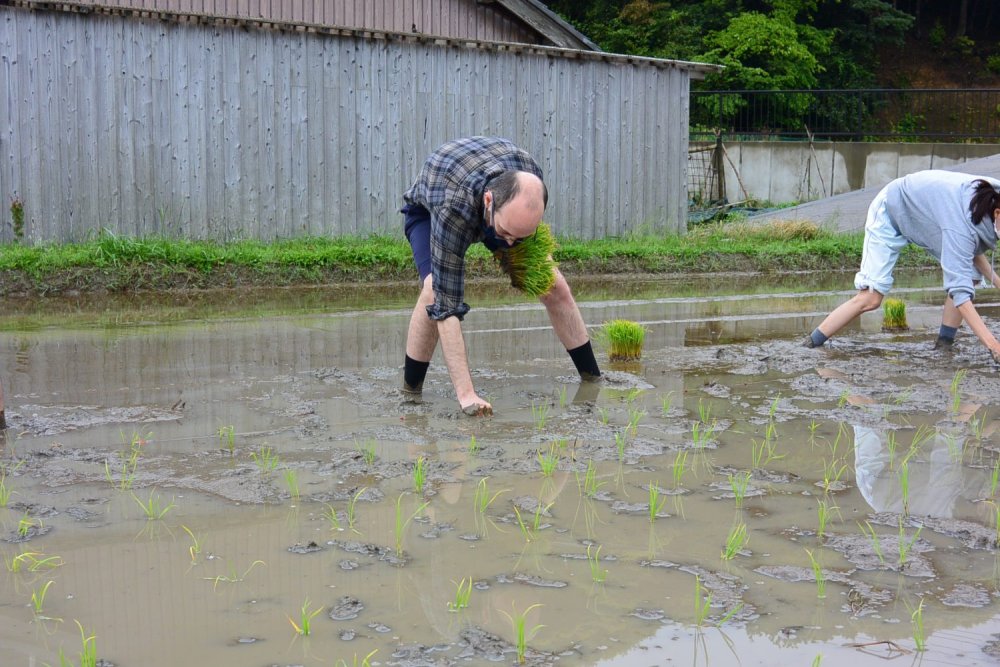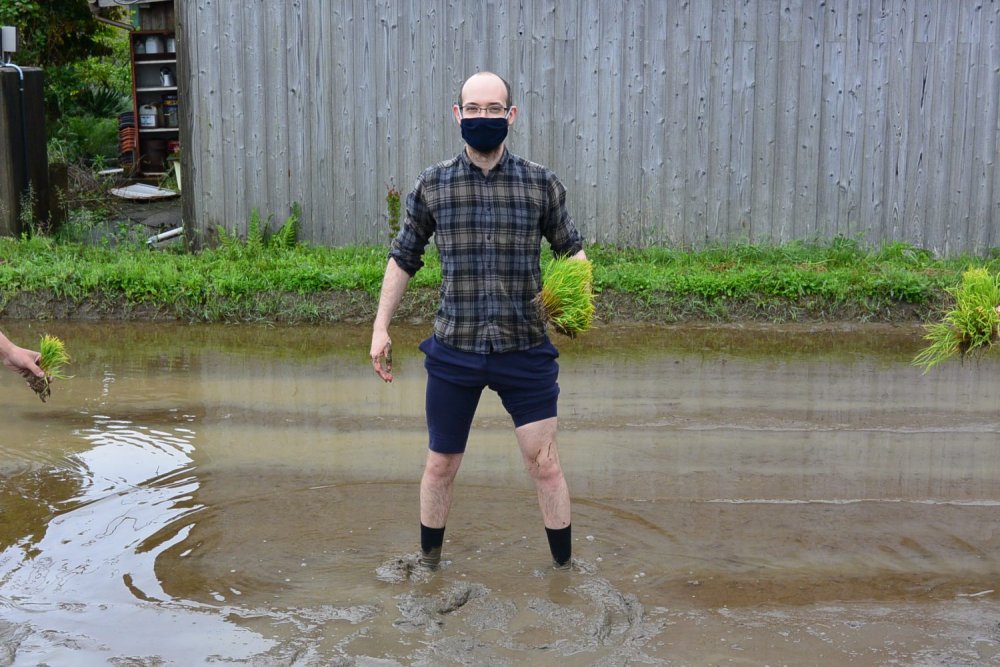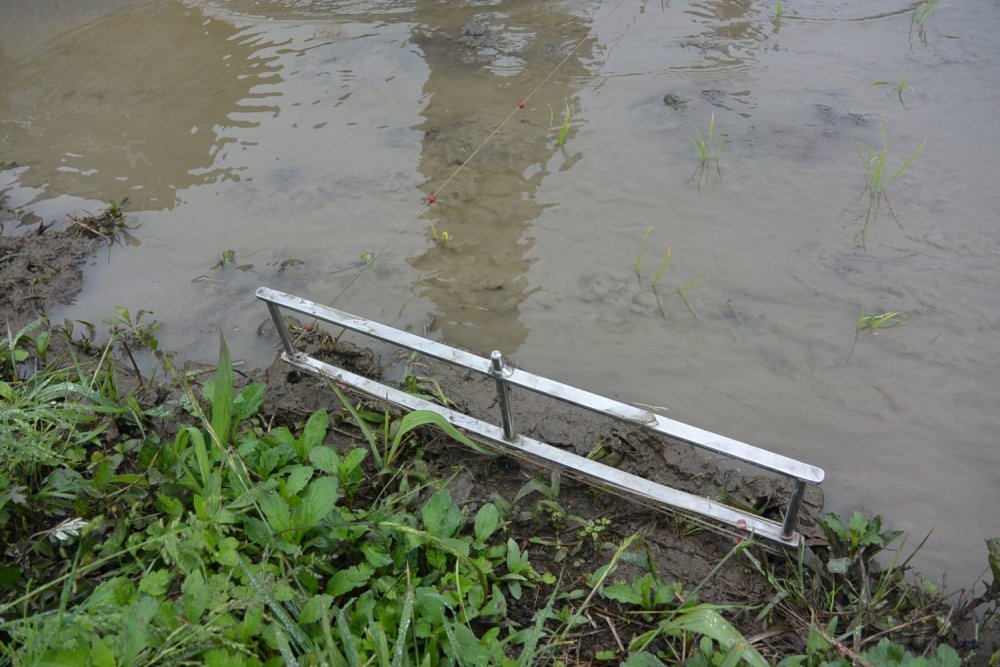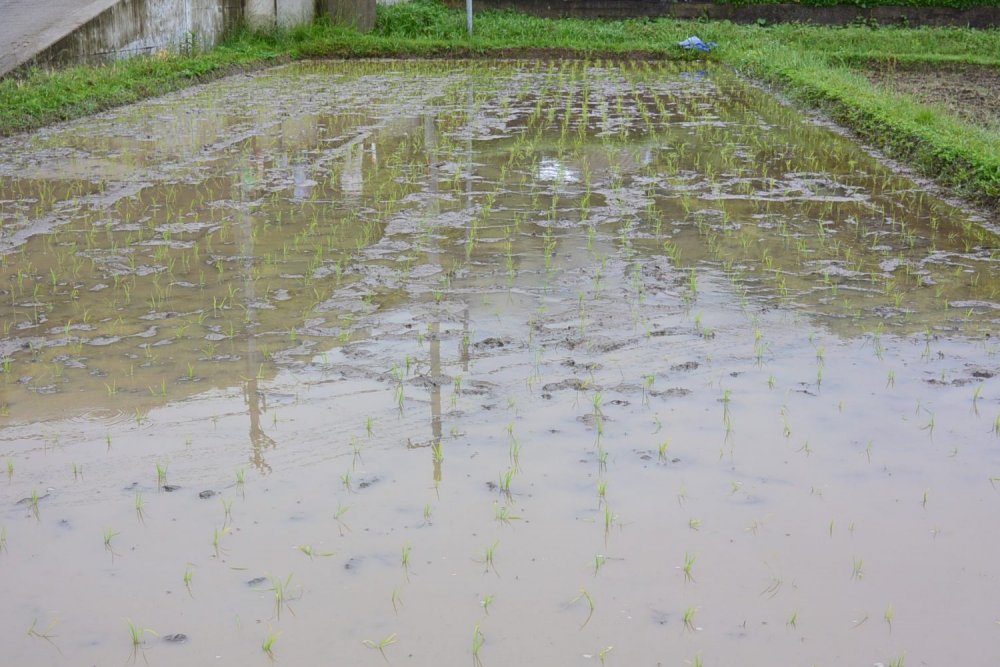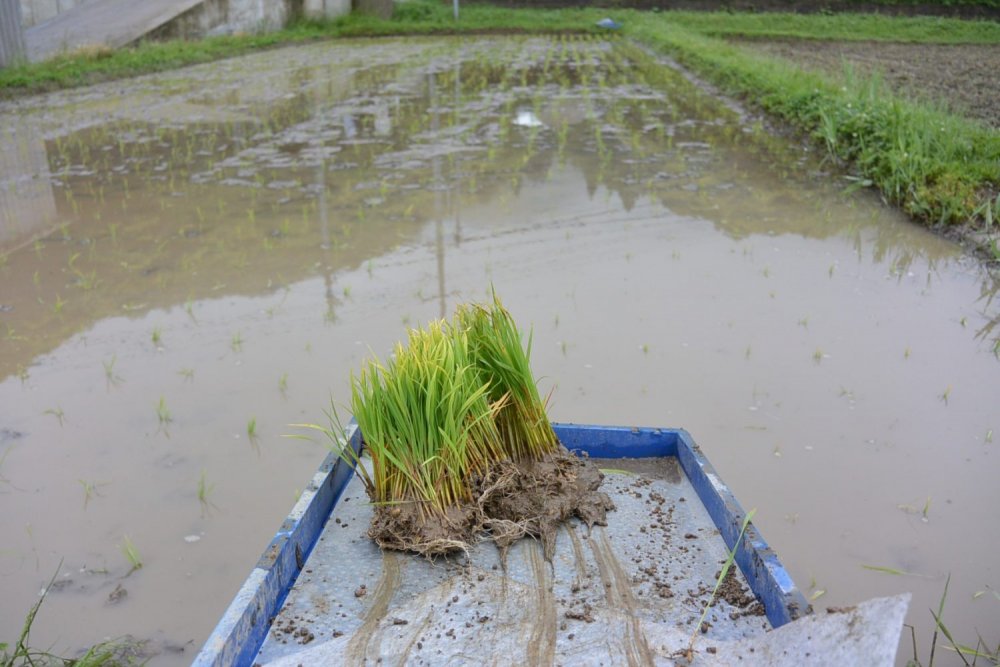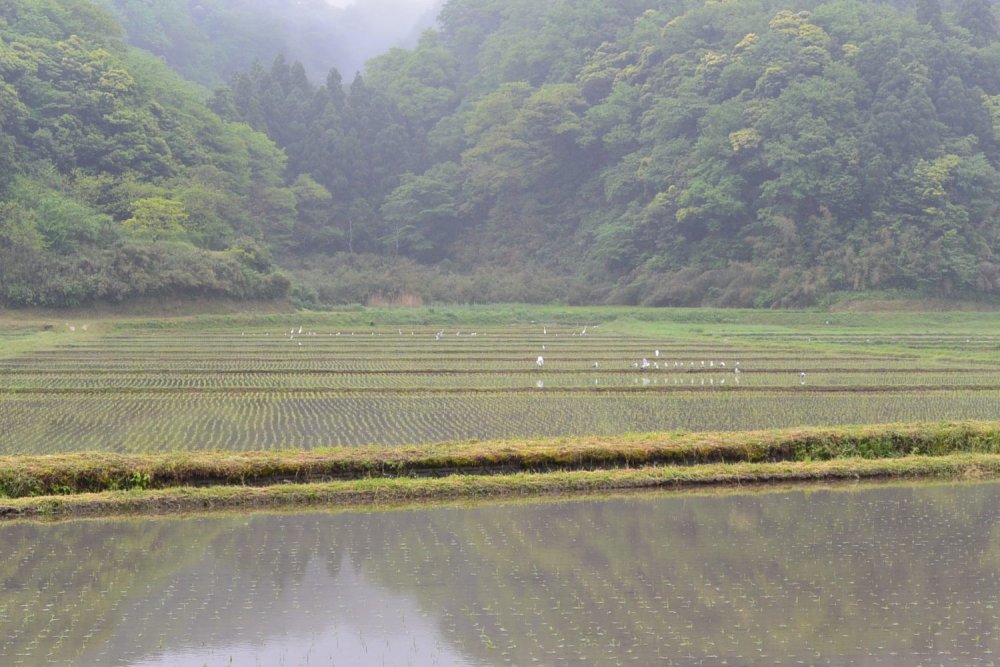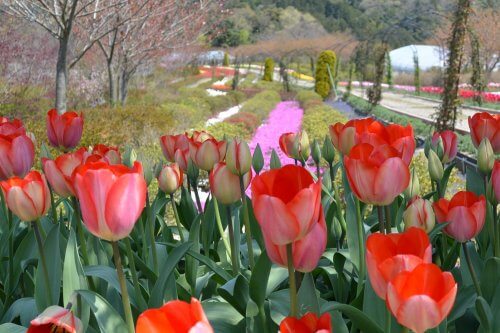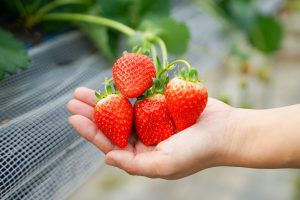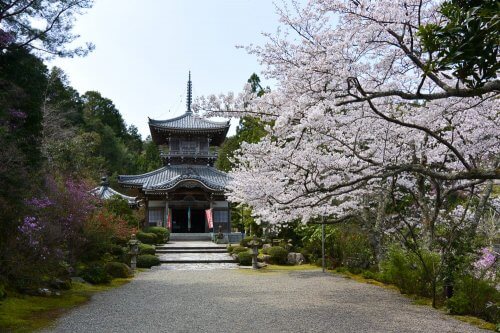Blog
Posted: May 18
Rice Planting in Kyotango
Last Sunday I was able to join a group of people doing a rice planting experience. This activity seems tailor made for the Corona season as it doesn’t involve any direct contact. It’s also easy to stay 2 meters away from the people next to you as you all have your own strip of paddy to plant. Plus once your hands are covered in mud you don’t really want to touch your face anyway.
The Rice Paddy
It had rained heavily the day before so the rice paddy was full of water. This is important for helping reduce the spread of weeds. It also ensures a stable temperature for the stalks while they get established.
Seedlings Ready for Planting
Fortunately the rain had stopped but the clouds had remained. If the sun had come out it would have gotten very hot and humid. Despite the shade the mud was surprisingly warm. It felt like I was getting a spa treatment for my feet while planting crops.
The farmer recommended that we keep socks on when we get into the paddy. It seemed weird at first but there were still some stones, and snail shells in the mud which could give you a small cut if you weren’t careful.
Rice Planting
The Paddy Before Planting
When planting by hand the farmers stretch a rope with small balls at regular intervals across the entire field. The balls are a little more than 1 shaku apart (1 shaku is 30.3 cms). This ensures that each stalk has plenty of space to grow in.
Rice Planting in Action Roll Your Trousers Up, it’s Muddy Work The Tool for Measuring the Distance Between Stalks
It was a small paddy so we were able to finish in just under an hour. I think that was the right amount of time, as it finished while I was still having fun and before my back started to hurt.
The Rows are Relatively Straight Some Leftover Seedlings
Not many people do rice planting by hand anymore, at least not commercially. Farmers use riding tractors that can plant it faster, more consistently and with less back pain. But it is still common for elementary school students to do a rice planting experience. And anyone staying in a countryside area of Japan in May should look into the possibility of giving it a try. Just make sure you take a spare pair of socks you don’t mind getting very muddy.
Commercial Fields With Storks Looking for Dinner

